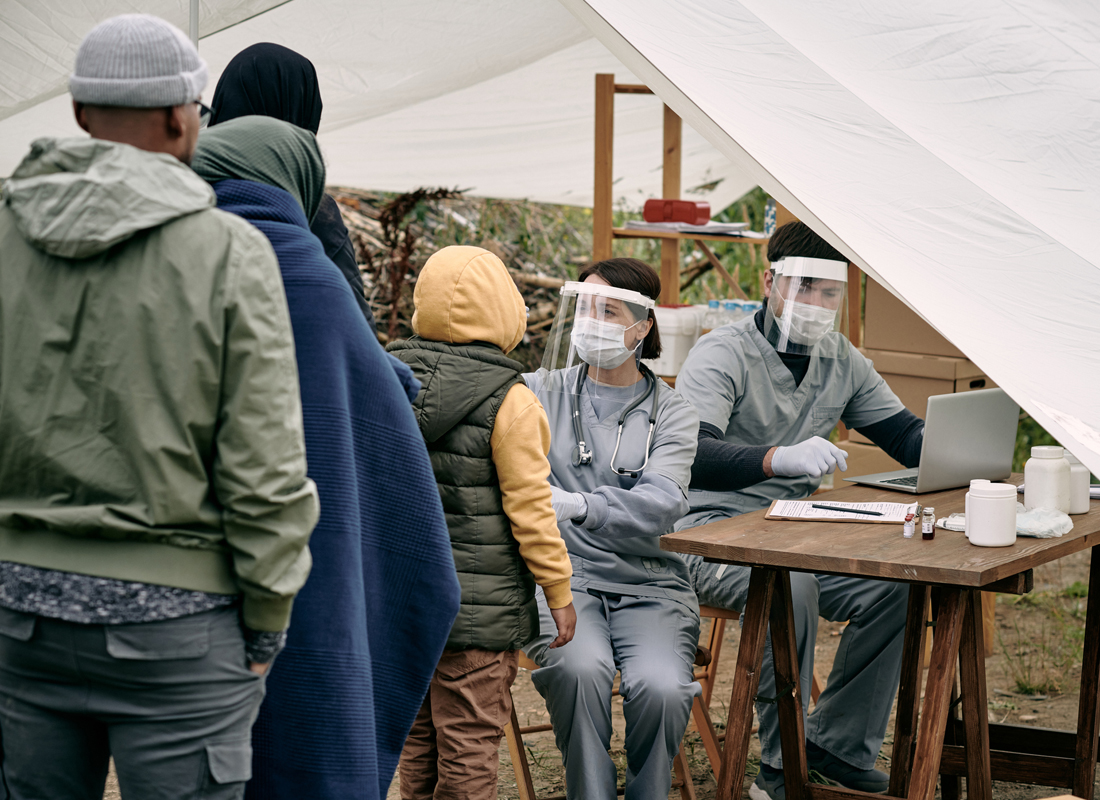Building a Home for Health Equity
The laboratory’s role in reaching underserved patient populations: an interview with Richard Levenson, Keisuke Nakagawa, and Michele Mitchell

Even in discussions of health equity, some groups are overlooked more often than others. Patients who are unhoused or housing-insecure are particularly vulnerable to this.1 Without a stable address or a safe place to live, it can be difficult to find a primary care provider, engage in routine or preventive medical care, or even obtain a cell phone to look up symptoms or call for help. In hopes of addressing this needs gap, providers at the University of California, Davis are collaborating with the Coalition of Concerned Medical Professionals (CCMP) to expand pathology and laboratory medicine outreach to underserved populations.
Q: How did you get involved with CCMP?
Richard Levenson: I first encountered CCMP volunteers at the Davis farmers’ market. I was interested in participating but, as pathologists, we don’t go out on the streets and perform biopsies on people—so how could I help? It occurred to me that one of the unmet needs is explaining the lab’s work to non-experts. The idea is that, if someone receives a serious diagnosis and has no idea what it means, we can help them understand what’s going on.
Keisuke Nakagawa: I was introduced to CCMP as a medical student, but stayed on after graduation to focus on improving equity and access to care. When the pandemic began, we launched the Digital Health Innovation Group to increase patients’ health literacy and empowerment. Most recently, we started a program that gives free cell phones to unhoused or formerly incarcerated people. The phones feature a digital “street sheet” with icons and text-to-speech functions that help recipients find and contact the resources they need. We’re hypothesizing that this will enable earlier medical interventions, reduce emergency room visits, and lower overall healthcare costs.
Q: What should laboratorians know about unhoused patients’ care access challenges?
KN: One of the biggest barriers is that not all patients have a phone. A smartphone in today’s world is one of the most important tickets to accessing care and improving health outcomes; I would put it on par with housing. So, as we move more and more toward digitally enabled services, we need to make sure that all patients can access those services.
RL: We need to make diagnostic information digestible for both providers and patients. A standard lab report is often illegible to anyone other than laboratorians, so delivering that to the patient doesn’t help them understand what it means. Instead, can we use artificial intelligence to create simple summaries of our reports? Can we volunteer to answer patients’ questions at clinics or via the phones CCMP is distributing? Can we persuade administrators to allocate time and funding to these efforts?
Q: What’s the next step in CCMP’s work?
Michele Mitchell: We’ve discussed creating opportunities for members of underserved communities to meet with pathologists in person to ask questions about their reports and diagnoses. CCMP is planning to start by offering this service at a community event to gauge whether or not there’s an appetite for it—and, if so, expand from there.
RL: That’s where the Digital Health Innovation Group’s approach comes in. They’ve already thought about how to make resources available and comprehensible to patients, providers, and counselors.
KN: There’s definitely a way to leverage the phone distribution program for this. The ideal situation is one where we use the devices for multiple purposes. What I love about Dr. Levenson’s approach is that it really emphasizes digital and health literacy. If we can create a service that connects patients with pathologists and laboratory medicine professionals to bridge the critical comprehension gap, I think it would provide a lot of health literacy support to patients who need it—and I think that’s very exciting.
Reference:
- Institute of Medicine (US) Committee on Health Care for Homeless People. Health Problems of Homeless People. In Homelessness, Health, and Human Needs, 39–75. Washington, DC: National Academies Press (US), 1988. doi:10.17226/1092.
Subscribe to Clinical Diagnostics Insider to view
Start a Free Trial for immediate access to this article